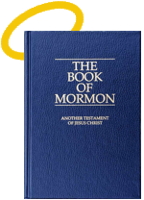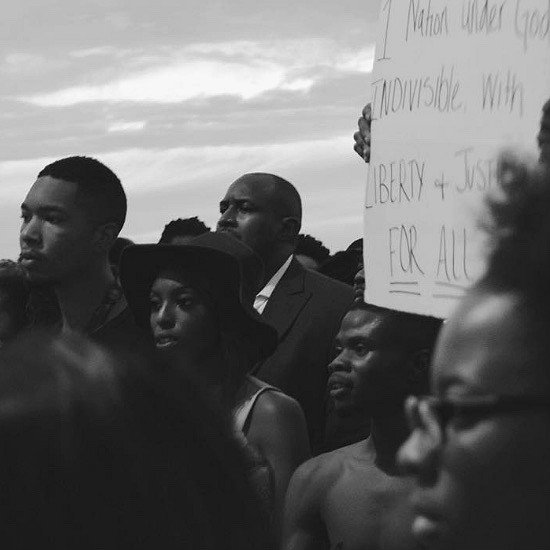
My distinct impression is that Avi Steinberg hopes to be able to say in twenty years, “I liked The Book of Mormon before it was cool.”
And why not? It’s not impossible that, in the coming generation, The Book of Mormon could be “in”. Much more embarrassing fads have seized America’s popular imagination, from all-protein diets to M. Night Shyamalan to oxygen bars to Seattle. Plenty of us have hung our hats on something silly in the desperate hope that it’ll be “in” just long enough for us to say, derisively, that was so yesterday to the folks who held off until a crowd had gathered.
Why not The Book of Mormon?
Steinberg’s book The Lost Book of Mormon, at least, wants to convince you that the author has discovered something that America must surely come to see, eventually—like Dark Shadows and Twister—as hip, even if only momentarily.
“To be a fan of The Book of Mormon is to walk a lonesome road,” writes Steinberg, casting himself as a prophet, howling on society’s street corner. “In a couple thousand years, The Book of Mormon may well be on the short shelf of American books.”
Working against this literary prophecy is nearly two centuries of scorn for the book that characterizes itself not only as holy scripture but also, in the way that holy scripture tends to do, as the unknown history of a people. After stooping to leaf through the book, Mark Twain himself dismissively called it chloroform in print.
Steinberg, swimming against the Twainian current, calls The Book of Mormon “an American epic”, and, apparently without irony, includes the Mormon scripture in the same sentence as Don Quixote, Huckleberry Finn, and Moby Dick. Steinberg even has the temerity to suggest that American literature first got “serious” with the advent of The Book of Mormon.
If you’re a self-respecting American reader, you’re probably wondering what medication Steinberg has been taking.
But what’s the criteria by which we have shunt The Book of Mormon off to the kiddie table of American letters? Surely not Twain’s diagnosis of the text, since, by this measure we’d lose an American library. Fine, Melville is an undeniable, American classic. And if there was ever an example of chloroform in print, it’s Moby Dick.
Steinberg’s fascination with the Mormon book is not misplaced, nor facile, nor merely gimmicky, though only Steinberg himself can account for his authenticity as a Mormon fanboy. Whatever Twain may have thought, it isn’t the text itself that makes The Book of Mormon a punchline.
Even poorly executed, the grand audacity of a two-hundred-and-fifty-thousand-word text that chronicles the story of a nuclear family’s sea journey, its fracture in a promised land, and the bloody enmity that persists among the family’s descendants for one thousand years, that imagines a sequel to the Jesus story, and that invents a sacred heritage for America even while appearing in print before there was anything called American literature surely merits more than snickering consideration from the literary aristocracy and go-ahead readers, alike.
And, anyway, The Book of Mormon is not poorly executed. Yes, if you take out all of the “and it came to pass”-es, you might reduce the book’s word count by a third. But the book’s narrative is complex. Many of the book’s characters are well-developed, surprising, and emotionally jarring. The book’s style is biblically derivative, to be sure, but, like the Bible, the book expertly mixes genres—history, poetry, sermon, epic, romance, and more—surfs nonchalantly between first-person and third-person views, plays with time, plays with space, fleshes out in striking, captivating detail another plausible world, and does not hesitate to torture its protagonists. Indeed, in the end, the book is bold enough to exterminate its protagonists altogether, violently, and with existential despair. Besides which, the book promotes a radical political agenda.
Considered, per se, it’s a stunning achievement in frontier American arts.
Not that the inclination to look askance at this piece of the Mormon canon is unjustified. Whether to Dianetics, or to Exposition of the Divine Principle, or to A Course in Miracles, the genuine, laudable American response to any text that vaunts itself as The Answer is pfft.
But the book itself is only what it is. Any other identity is someone else’s invention. It isn’t gentile skepticism that keeps the Mormon scripture beneath the consideration of outsiders, but the insistence of insiders—the chosen who claim it as their exclusive property—that the text can only be scripture.
The Mormons who have made The Book of Mormon one of the most printed, least read books on the planet love to declare, “The Book of Mormon is true“. They recite this mantra with a conviction that presumes not only that there’s nothing more convincing than a declaration, but also that the word true can have only the one meaning they assign to it. Steinberg vaunts this truthy intractability. The “allure” of The Book of Mormon, he writes, “is still in its insistence on being a completely true story that describes real places and real people”.
But it’s the LDS Mormon insistence that the book can be only one thing and one thing only that will prevent the book from becoming the fab American fad of Steinberg’s visions.
The Bible long ago became a multi-text, owned and interpreted by lots of different people in lots of different ways. For some, the Bible is history. For some, it is sacred history, which is not the same thing. For some it’s poetry. For some it’s heritage. For some it’s law. For some it’s wisdom. For some it’s folly. For some it’s truth, and for some it’s fiction. And for some it’s all or many of these things at the same time. By this plurality the Bible transcended fashion and embedded itself in the foundation of Western culture.
As long as LDS Mormons insist that The Book of Mormon must be “true” and nothing else, as long as they insist that the book’s identity has no plurality, they will keep their holy book—as worthy as it is—from capturing everyone’s interest in the way that it has captured Steinberg’s.











